Unlike in Dubrovnik, where an observant visitor will spot sights like this,
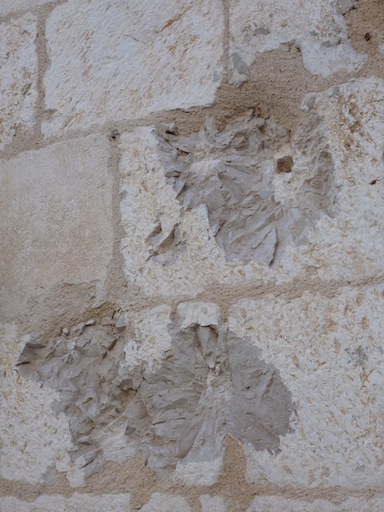
any signs of the nineties wars are either nonexistent, well hidden, or have been fully repaired. Perhaps I didn’t see such evidence because, unlike Dubrovnik, Kotor didn’t carry the same strategic weight. Or perhaps the Croatians saw how attacks on their UNESCO world heritage site were shifting global opinion, they launched few, if any counterattacks against Kotor. Or perhaps it’s simply because our guide avoided discussions of the war and our time in Kotor was so brief that we had no opportunity to see any scars. Regardless, I saw no overt evidence of the war. Here are some of the things I did see.
Enter the main gate, stand in Arms Square, and face one of the most famous structures in the old city – the Clock Tower. This three-story structure was first built in 1602. If you see a slight lean to it (12 cm toward the right), that’s a remnant of the 1667 earthquake. Despite some efforts over the centuries to correct the tilt, the 1979 temblor sealed its position. It hasn’t always been a clock tower, though. In fact, the clock mechanism was installed in the 19th century when the Austro-Hungarian empire controlled the city. The same family has maintained the mechanism since its installation – a period exceeding 200 years.
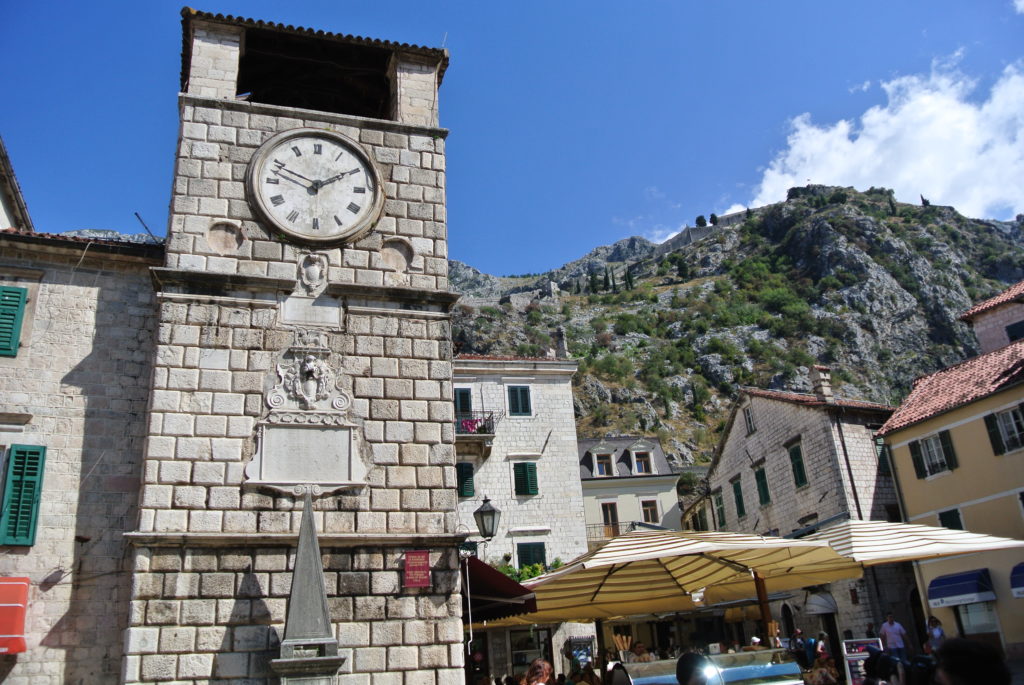
The triangular object at the base of the tower is a pillory. Criminals were tied to the pillory with the duration and position determined by their crime while other citizens of Kotor could harass, humiliate, and otherwise punish them.
We continued around a small portion of the Old Town past some of the city’s palaces and landmark older churches. Two of the most notable are Saint Tryphon’s Cathedral
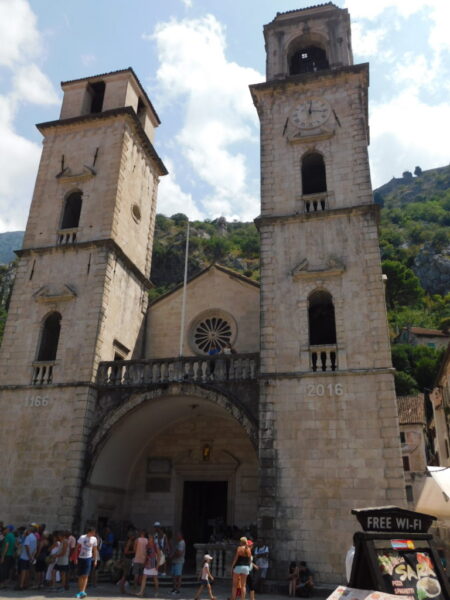
and Saint Luke’s.
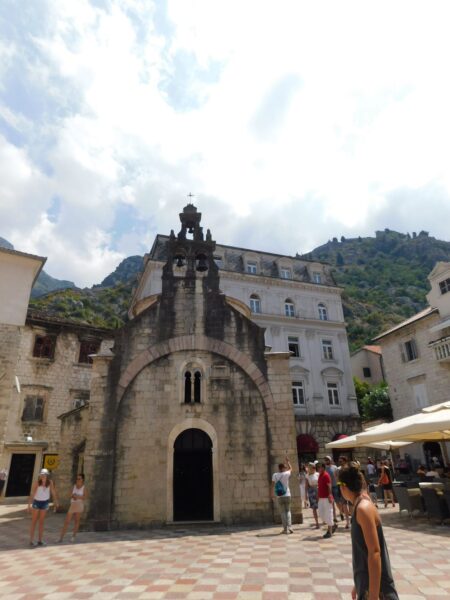
Saint Luke’s Church was built in 1195 as a Catholic church but from the middle of the 17th century through the first part of the 19th century, it housed both Catholic and Orthodox altars and people of both faiths worshipped there. This church is also notable for the sealed crypts beneath its floor. Most of the people buried there were plague victims.
As the patron saint of the city, it seems appropriate that Saint Tryphon would have such a large edifice with the two bell towers denoting its significance. The first church built on the site was erected in the eighth century but the present Romanesque structure dates from the 12th century. Its consecration year of 1166 is noted on the left tower. You probably noticed that the right tower is taller and more ornate than the left. The reason for this is that the church, like so much of this region, suffered significant damage in the 1667 earthquake. The city embarked on an effort to rebuild and restore it. Unfortunately, they ran out of money before they completed the project and it still stands incomplete today. The 1979 earthquake also damaged the church but it was rebuilt to its unrestored restored state.
Of the 630,000 residents of Montenegro, only about 3 and a half percent are Catholic. Nearly three-quarters are Orthodox and 19 percent are Muslim. (According to a 2003 census, Montenegro has a mere 12 Jews.) Most of the Catholics live in the Municipality of Kotor so the presence of more than one Catholic church there makes sense. Given the majority of Orthodox believers in the country, it also makes sense that there is an Orthodox church.
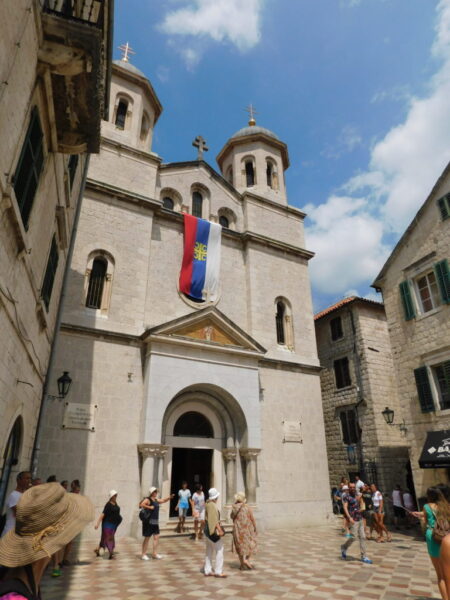
Saint Nicola’s church went up in 1909 and stands almost directly opposite Saint Luke’s.
The walking tour took us past but not into these places and finished late enough that we had just enough time left in our visit to have lunch and either take in one or two sites or attempt a walk up the city walls. Though the latter promised a spectacular view of the town and the bay, the day was so hot and the walk so steep that everyone opted out of that challenge.

(To spot the wall, look for the grey line leading to the church about halfway up toward the left.)
Oddly, though we didn’t all eat together, each tribe, as I recall, independently decided to lunch at the same restaurant – the Pizzeria Sara in the shadow of Saint Tryphon’s.
I’ll continue my report on the day in Kotor in the next post.